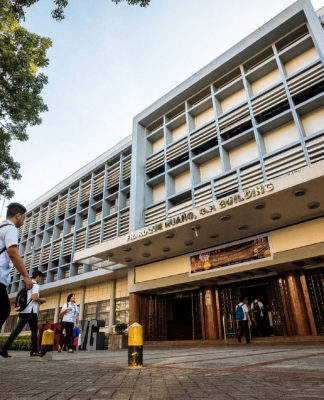THE SANTO Tomas e-Service Providers (Steps) is preparing a “help desk” that will entertain computer problems of the various offices in the University. The help desk will be located at the Steps office in the Main Building.
According to Steps Director Fr. Melchor Saria, O.P., the help desk, the Internet Protocol Telephony, will help track common technical problems in a more systematic way. The project will also provide “immediate and effective solutions” to the computer-system problems.
Steps will use Voice over Internet Protocol (VoIP), a method used by call centers to place phone calls anywhere in the world using the Internet. VoIP works by taking voice signals and transforming them into digital data that may be transmitted over the Internet.
Telephone units will be connected to the CPUs of the help desks and computers in University offices. The help desks will have four attendants.
The attendants, who will take office by the first week of December, will be equipped with computers that will record the reported problems using a digital archive. Through the archive, Steps can generate the statistics of the common problems encountered by the offices.
Saria said one of the reasons why the project was created is to eradicate the notion that system breakdowns occur because of lack of manpower to solve the network troubles. He told the Varsitarian that Steps’ eight software engineers, aside from computer technicians of each college, are enough to solve the technical problems of the University.
“My goal is to keep a lean technical team,” Saria said.
Hotspots
Aside from the help desk, Saria said wireless fidelity (wi-fi) broadband connection will be possible on campus next year.
Students with laptops equipped with a wi-fi card, will easily access the internet anywhere inside the University by typing a username and password. But Saria said some sites, especially pornographic ones, will be blocked.
According to John Uy, technical consultant of Steps, the wi-fi network or “hotspot” will be made available through different access points inside the University. Every access point will be linked to the University Local Area Network, which is connected to the wired Internet line. A wi-fi adapter will be installed in every access point.
















